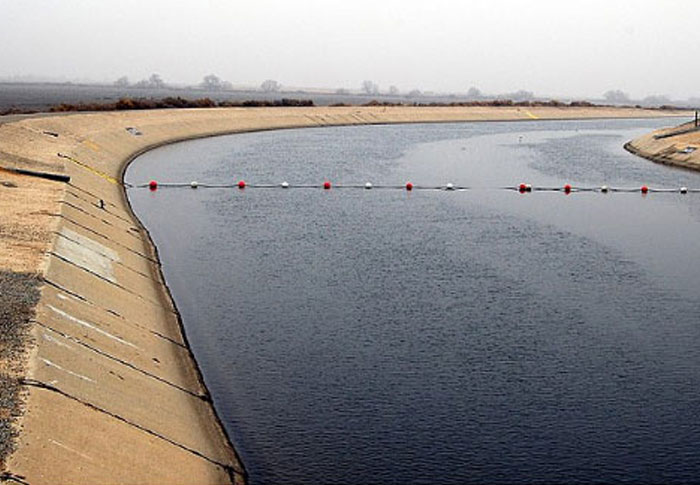How Water Districts Modernize their IT Processes: A Look at California’s Technological Transformation
Water is essential in our daily lives, and the water industry in California has come a long way to supply clean, safe, and reliable water to residents, businesses, and organizations.
Over the past two decades, with limited resources and increasing demand for water services, water districts have consistently relied on outdated IT processes. This has led to inefficiencies, a higher risk of failures, and ultimately, difficulties in meeting the escalating demand for water services. With an antiquated IT infrastructure, the risk of system failures increases.
In this article, we’ll explore how water districts in California are embracing technological advancements to revolutionize their operations and communication and implement data-driven solutions with modern construction management systems or (PMIS) for better results.
A Brief History of Outdated IT Processes in the Water Sector
Most water districts have been using outdated IT processes, resulting in many issues such as data inconsistency, system failures, and poor communication. Such IT processes may consistently operate in the background, but when they fail, the result is costly and even detrimental.
Some of these outdated IT processes include manual data entry, in-box marooned email communication, and ad-hoc data management. Manual data entry procedures require water districts to fill out forms and transfer data from one system to another, leaving much room for data errors and inconsistencies. Email communication lacks transparency and can provide room for miscommunication and mistakes that can be costly.
Additionally, ad-hoc data management methods and aging IT systems make it hard for water districts to implement data-driven solutions. This can make it challenging to reduce operational costs.
Benefits of Implementing Modern Technology in Water Districts
Water districts can benefit from improved communication, efficient administration, and better management systems by modernizing IT processes. Adopting advanced technologies such as cloud computing, GIS systems, and the Internet of Things (IoT), allow districts to operate proactively, streamline their communication processes, and allow them to standardize their data management practices.
Improved Communication and Data Management
Advanced IT solutions can improve communication among the staff, engineers, contractors, and with customers. For instance, a customer portal can allow access to GIS information from any device with internet access. Additionally, communication within the district, which can include notifications and alerts, can be automated to ensure it’s timely and efficient. This minimizes response time in emergencies and helps manage water systems proactively.
Adopting a proper data management system can provide water districts with real-time insights into their systems’ operations. This allows the staff to identify system issues and resolve them before they lead to significant problems that increase operating costs and hurt the performance of their systems.
Increased Operational Efficiency and Cost Savings
Modernizing IT processes in water districts can significantly improve operational efficiency. As mentioned earlier, advanced systems help identify issues in the infrastructure quickly and efficiently. This helps reduce downtime and saves on maintenance costs. Additionally, automating communication and data entry procedures can increase productivity and improve operating efficiency. Furthermore, modernized IT processes can also facilitate better data analysis using mission-critical dashboards which results in better decision-making, allowing water districts to anticipate and address potential issues in their systems proactively.
Case Studies of Technologically Advanced Water Districts in California
Several California water districts have already adopted advanced IT solutions to revolutionize their operations and improve their performance. Seeing how successful these implementations have been can provide other water districts with inspiration to consider adopting similar approaches.
Examples of Successful IT Implementations and Their Impact on Operations
The Inland Empire Utility District (IEUA) in Riverside County was one of the first water districts to adopt a collaborative cloud-based construction management solution. They introduced a real-time system that monitored their capital improvement projects. This implementation resulted in significant cost savings, streamlined communication, and better project tracking.
Another example is the Modesto Irrigation District, which adopted a GIS system. This system allowed them to monitor the water use and locate which areas experienced more water usage, allowing them to identify areas to concentrate their conservation efforts.
Focusing on water conservation, the City of San Diego’s public works department adopted an IoT system to continually track and monitor water usage data. The data was then used to create a highly reliable water-use dashboard, made available to residents and public officials. This gave residents insights into their water usage and encouraged them to conserve water.
Conclusion
Modernizing IT processes in water districts by embracing advanced technologies is crucial in improving water distribution systems, reducing operating costs, and enhancing water usage management. However, water districts need to be thoughtful in their approach.
Key Takeaways for Other Water Districts Seeking to Modernize Their IT Processes
Collaboration between all stakeholders is essential in the process of modernizing water district IT processes. This ensures greater resilience, and adoption rates while enhancing communication. Additionally, having a strategic plan, prioritizing investment in advanced IT solutions, and properly assessing the IT landscape in a water district all play a vital role in successfully achieving this outcome.
Consideration of Unique Challenges and Opportunities in Each District
Every water district has unique challenges and opportunities for modernizing IT processes. While some districts are ready to take a technological leap, others may require more time and investment to get there. Therefore, each district must approach this process carefully, studying its unique situation, considering the benefits and the costs, and developing a plan tailored to the districts’ and users’ specific needs.





